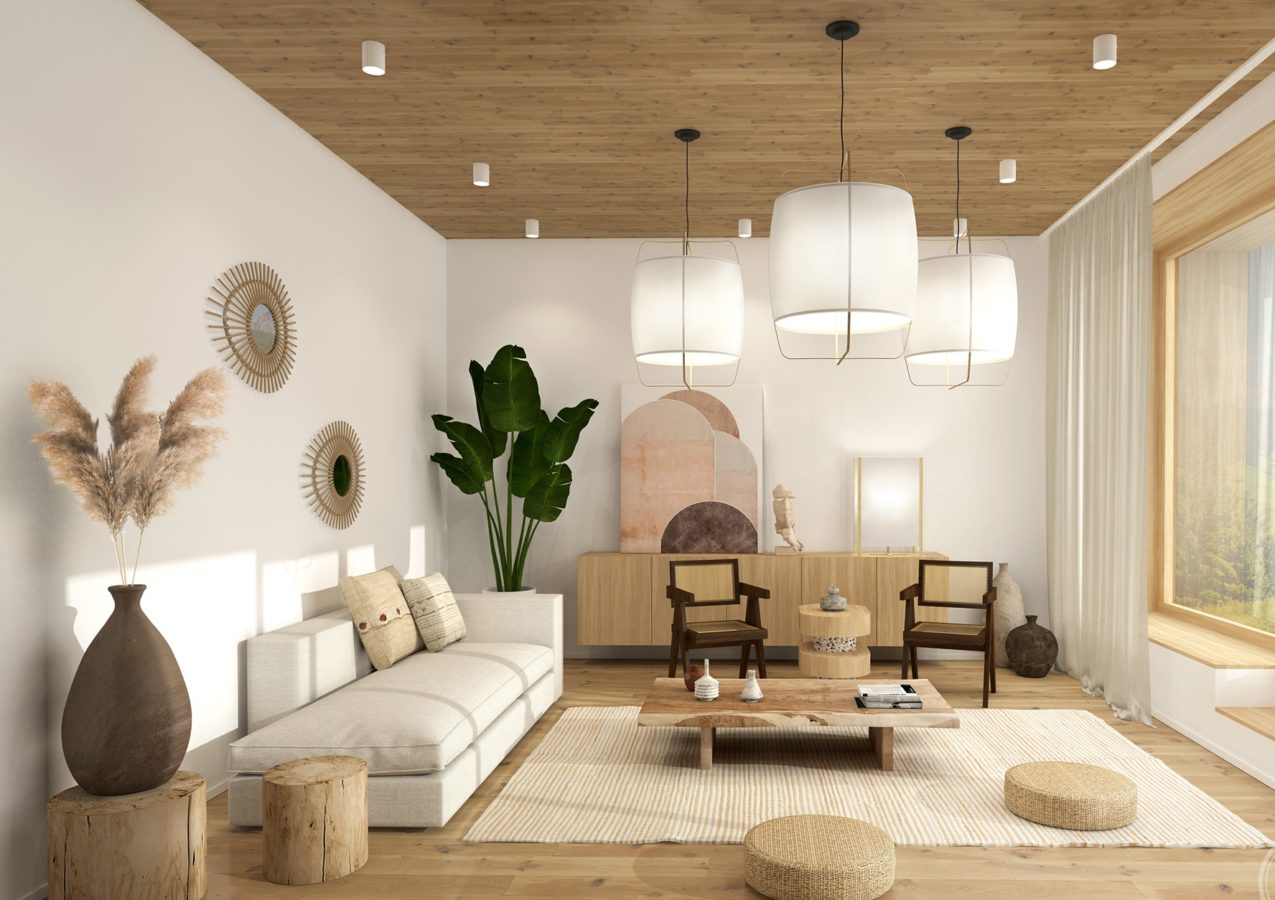Japandi is an emerging interior design style that’s becoming even more popular this year. What we love about this design concept is the clean lines, effortless style, and a mix of materials that create a serene living space. Each aesthetic focuses on simplicity, soft hues, natural materials, and comfort. Combined, Modern Japanese and Scandinavian interior design create a fresh look—Japandi.
What is Japandi Interior Design?
Japandi is the intersection of Scandinavian and modern Japanese interior design styles. Both, rooted in minimalist design principles, with a focus on warmth, natural elements, and muted color palettes. With Japandi, you won’t find ornate, gaudy detailing. Instead, shapes and lines really shine in these spaces with functional yet aesthetically pleasing furnishings and decor. Ample natural light and plants are also a key feature in Japandi interior design.
Japandi Materials
Key materials used in Japandi interior design styling include natural fibers, furniture made from natural materials, and even handmade pottery and decor. Japandi style rooms balance natural materials with clean lines, solid muted colors for a modern feel. To style a room with Japandi in mind, look to these key materials:
For furniture:
- Rattan
- Wicker
- Cane
- Wood (walnut, acorn, teak)
- Bamboo
- Upholstered (linen, cotton or flax blends)
For textiles:
- Organic Linen
- Organic brushed cotton
- Organic cotton muslin
- Velvet
For decor:
- Terra cotta
- Clay
- Glass
- Concrete
- Wood
- Plants
- Anything handmade with solid colors, patterns should be accents and nothing bright or loud.
These are just a few ideas for materials, and of course, depending on the pieces you select, your own Japandi style can lean more Japanese or lean more Scandinavian — but that’s completely up to you!
Modern Japanese Interior Design
Understanding Japandi means first understanding Japanese interior design style. Modern Japanese interior design is rooted in minimalist principles, clean lines, and natural materials. With modern Japanese-style rooms, you’ll see simple, oftentimes low, furniture, blank walls, as well as a neutral color palette.
In modern Japanese-style homes, less is more. So when selecting a color palette, it’s a good rule of thumb to include materials in this too — every material has a color to it after all which affects the overall design of the space. Keeping the variation in material and colors relatively limited makes a space feel more minimal, clean, and fresh.
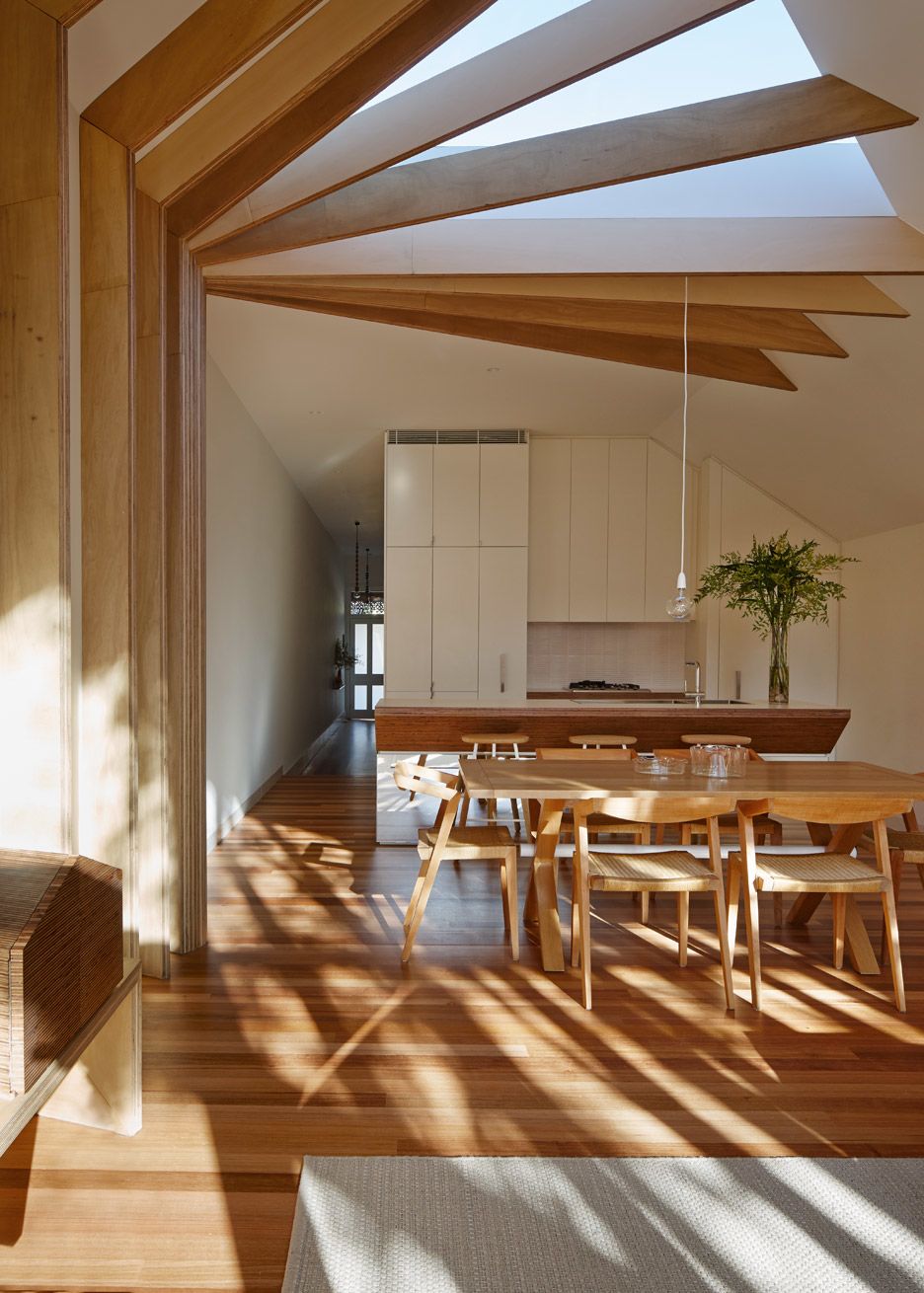
In this home by FMD architects, you’ll marvel at the dramatic wooden beams that allow natural light to disperse in the living area. You’ll also notice that the wood is repeated in several places, keeping the overall palette simple which gives you a zen-like feel.
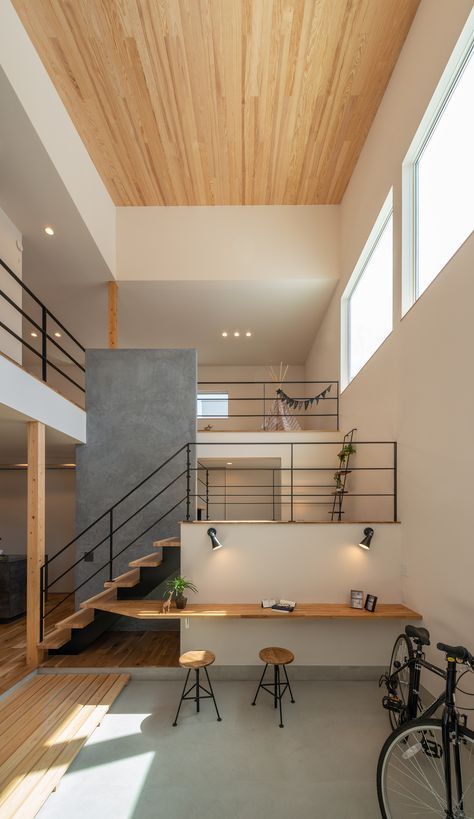
Here you’ll see that the palette is also limited while letting the large concrete wall really take center stage. The contrast of the concrete against the white walls and the wood furnishings makes the space feel calm and inviting. You’ll also notice that Japanese-themed homes like to use warmer light wood, sometimes contrasted with touches of walnut or acorn tones. It’s all about balance.
Scandinavian Interior Design
Scandinavian interior design, like Japanese, is rooted in minimalism but takes on a different approach to achieve the calming space that we love from the Japanese interior designs. You might’ve heard the term “hygge” in reference to Scandinavian designs, which refers to warmth and comfort — something that this design concept defines by its textiles and color palettes. We’ve talked about this before so you can check out some more examples of Scandinavian interior design here.
In modern Scandinavian homes you’ll find neutral palettes with grays, whites, accented with black, and some mix of other neutral tones — at a minimum. Scandinavian interior designs embrace a mix of materials from velvet to leather, and knits, crochets, and more with a casual, “undone” look to achieve the coveted hygge style. One thing we find in these designs is the attention to detail with furniture pieces. Don’t let the neutral palette fool you, with the polished, unique furnishings, Scandinavian design is anything but boring.
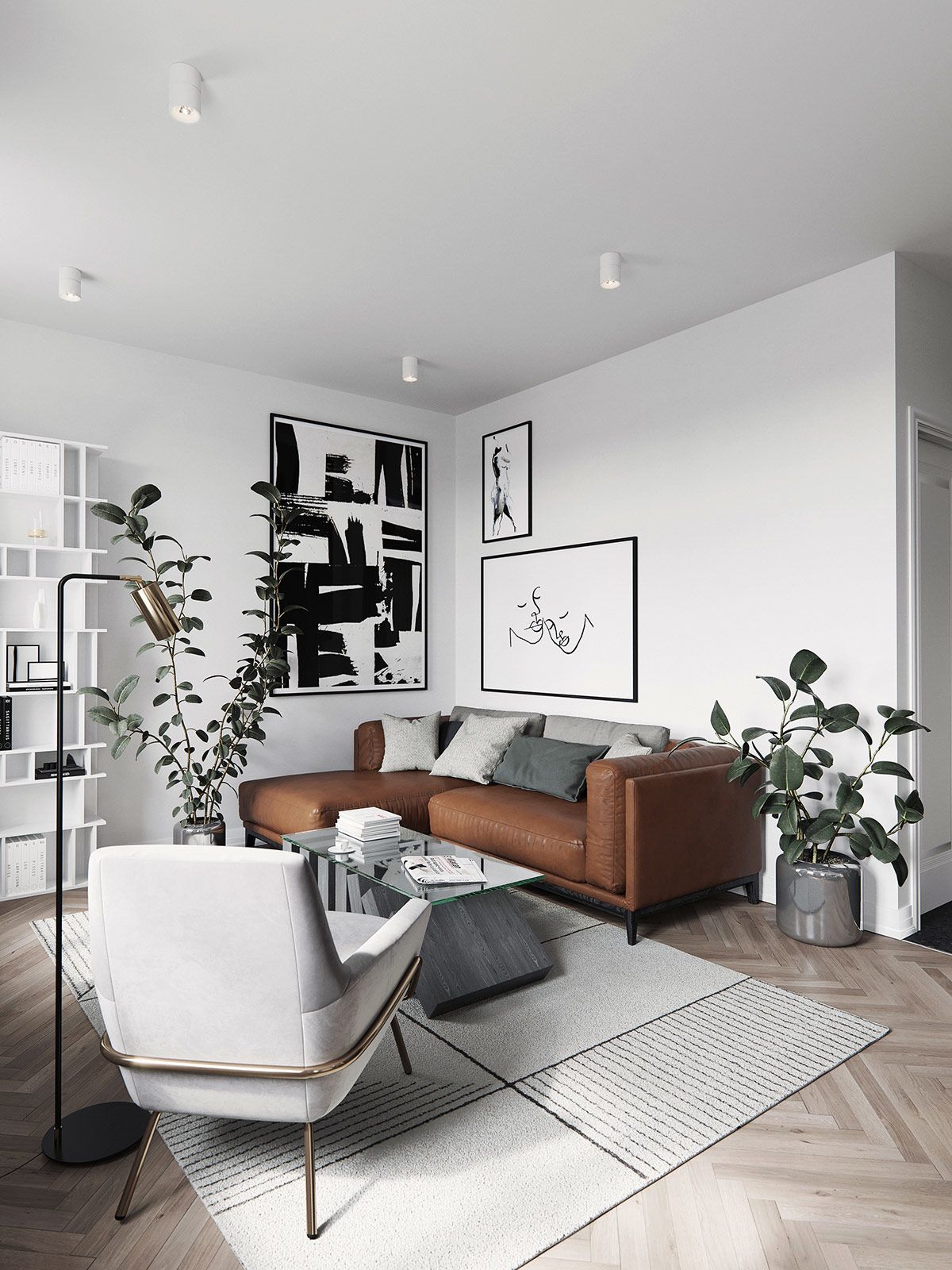
Not only is this living space chic, but it really makes a statement in such a small footprint. They really are the masters at small space designs. The cognac leather couch pops against the muted gray surroundings, the neatly decorated bookcase acts as an art piece, and the statement coffee table is both loud and understated at the same time. You’ll also see the elements of clean graphic lines repeated throughout the space, tying it all together.
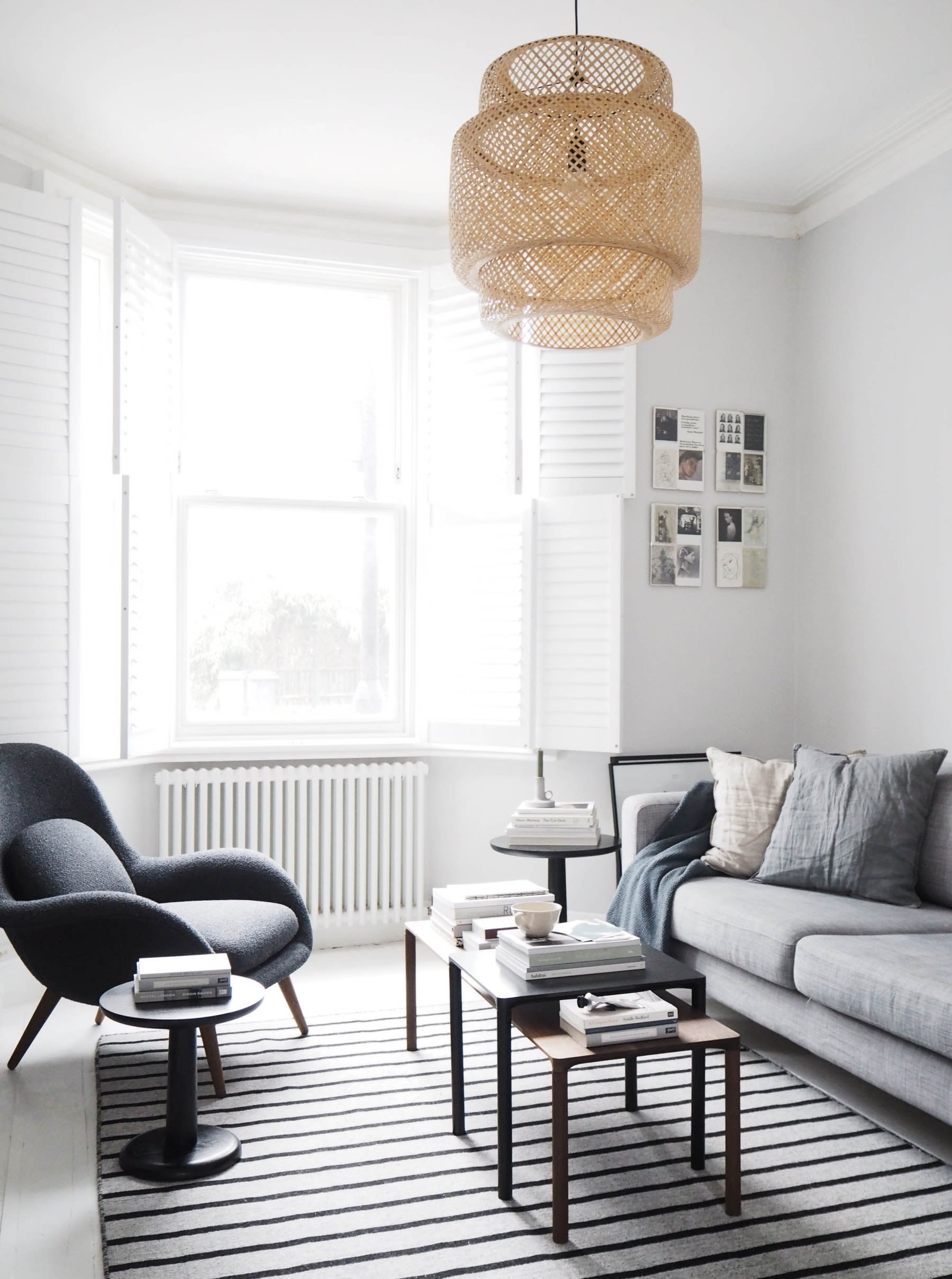
Gray on gray on gray — with a dash of black. For Scandinavian designs, mixing neutrals is its bread and butter and black brings the drama. Linen throw pillows and a textured yet armchair add a cozy hygge feel to the space. You can see they don’t shy away from the coffee table books. Although there are minimalist fundamentals at play with Scandinavian interior design, it doesn’t mean that the spaces have to be barren. A neutral palette allows you to utilize more decor and create an “undone” feel without looking cluttered or disorganized. The abundance of coffee table books makes the space feel lived-in—it’s about being intentional.
Japandi Interior design
And now, mix the two together! With the knowledge of modern Japanese and Scandinavian interior design styles, you can mix and match to your heart’s content and create a space that is uniquely yours. Don’t like a gray space? Mix in some muted pastels you’d find it Japanese design styles. Don’t want to give up velvet? Add a hint with a sculptural accent chair.

Ah, the serene feel of a Japandi breakfast nook. The wood slats are a nod to classic Japanese style, while the pedestal table and statement lighting anchor the look with a modern Scandi touch. We love the hint of color that this sage and eucalyptus green palette adds to the decor and the wishbone chairs. Adding colors found in nature play really well with the organic materials in a Japandi style space.
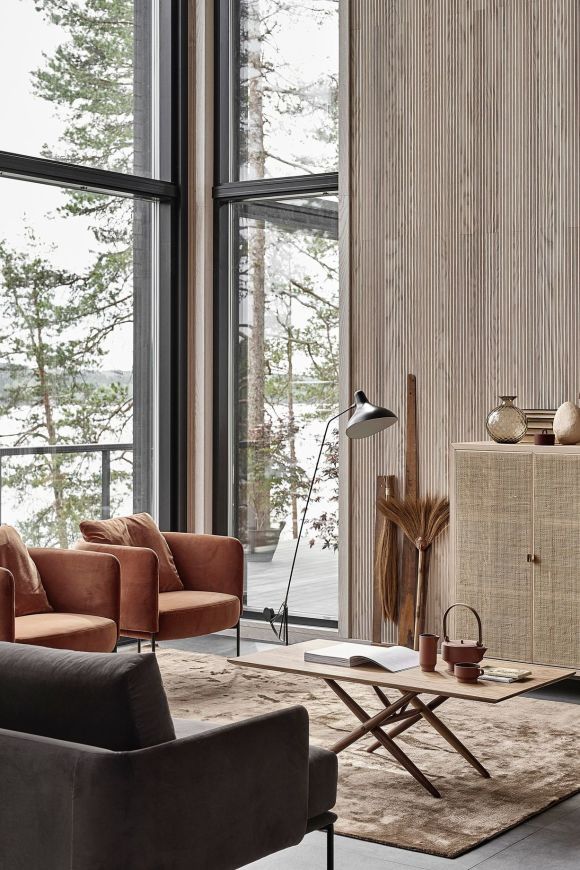
We love the mix of earthy tones and decor juxtaposed with luxe textiles that give this a modern feel. It feels lived in and effortless, without being too busy — exactly what you want to achieve with a Japandi space. The velvet is brushed, presented in muted tones of the neutral variety. These unexpected touches are what makes a space unique and interesting.

If our rooms looked like this we’d be here all day. I know we said that solids are key when it comes to Japandi, but this one pushes the boundaries (and it works!). The white linen bedding and muslin throw allow the geometric high-pile rug to make a bold statement — without being “too much”. Although the rug is patterned, the color palette is still neutral while everything else is kept simple, staying true to Japandi style — a fun play on this modern look.
Exploring different design styles is one of our favorite pastimes. Remember, there are no limits to your creativity. Check back here for more design and travel inspiration — and the perfect water filtering pitcher to go with your space.
